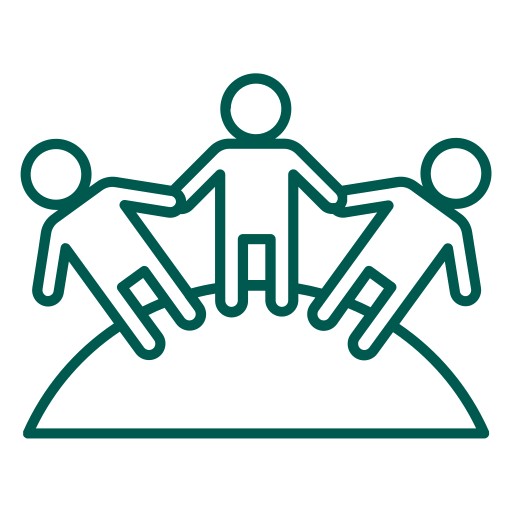
In 2025, the Levin Center conducted a study of all 50 states to examine how legislatures ensure government programs work effectively for citizens. Factors such as legislative oversight committees, routine engagement with executive agencies, collection of casework data, digital transparency tools, and user-centered policy evaluation were of particular importance. The full report can be found here.
State Summary #
Michigan has a relatively robust basic oversight infrastructure. Legislative oversight committees in Michigan are generally active and can accept written testimony from citizens. Both chambers of the Michigan Legislature use a centralized system for tracking constituent engagement with legislative offices, including casework.
Legislators in Michigan can and do exercise their ability to require extensive reporting from agencies as a condition of their receiving appropriations. While these reports generate enormous amounts of information, most of the reports leave something to be desired in terms of providing a sense of citizen experience with programs and agencies, and it is unclear how much of the information generated by these reports today is used in meaningful oversight, or how it would enable people-centered oversight in its current state.
Case study: Human-centered design for a better public benefits application in Michigan #
The story of how Michigan used human-centered design to overhaul its public benefits application process begins, naturally, with a numbered form: DHS-1171. Clocking in at more than 40 pages, the old version of DHS-1171 was used by a quarter of Michigan residents every year to apply for a variety of public benefits.[1] At Civilla, the Detroit-based nonprofit that undertook the monumental process of redesigning it, the old form has a sort of legendary status. The form, they note, contained 1,000 questions and more words than all of Shakespeare’s Macbeth in a jumbled format.[2] It requested the date and city of conception for most people under the age of 22. It was the longest form of its kind in the United States.[3] Because of its length and complexity, this ostensible tool for accessing public assistance, in reality, served as a barrier to service for millions of Michiganders. It also consumed agency staff time with error corrections and other processing difficulties. “People described,” writes Civilla, “feeling like they were interacting with a fraud prevention system, rather than working with a service provider.”[4]
Today, the equivalent form is twenty pages with large text, bright colors, and questions written in clear language. Civilla reports that 90% of applicants feel confident they can complete the application on their own and 90% of applicants do complete it within 20 minutes. For staff, the new form contributed to a 42% drop in processing time.[5] And the reviews from applicants and agency staff are outstanding. “After filling out the new application I feel like I can breathe again. The old application would have taken me a whole day. This one was more understandable and less stressful — it asks you the questions but with respect,” said one applicant.[6] A caseworker observed that, after the new form came out, “People are coming to me with a different tone. They said it felt like the application was more caring.”[7]
It may just be a form, but Michigan’s new public benefit application is a triumph. It improves the agency’s efficiency and applicants’ experience in applying for benefits. It helps government deliver services better and helps applicants get the assistance they need. And its transformation was only possible because of a deliberate focus on people.
Design of forms — design of entire programs, for that matter — comes with many competing priorities and choices of where to focus attention and effort. The choices the designers of the old DHS-1171 made are clear: it was a form built to adhere as closely as possible to regulations and eliminate risk. Writes Civilla, “The benefits application was originally meant to serve the people of Michigan, but it had lost sight of that intention along the way. Over the course of 30+ years, it had been designed around process and policy, lawsuits and audits — additions that had accumulated, without considering how they might actually impact people applying for benefits every year.”[8] By choosing to focus on people instead, Civilla’s redesign changed all that.
Choosing to focus on people is not easy, especially with thirty years of institutional inertia in the other direction (Civilla’s effort was the sixth to redesign the form in that time).[9] It is also challenging because of people — people in all their messy, diverse unpredictability. To address this, Civilla used a process of human-centered design, built around user research — weeks of interviews with benefit recipients and frontline staff — to “understand the public benefits through the eyes of those who interacted with the system every day.”[10] As the form neared completion, a limited pilot program and continuous improvements based on feedback from the front lines of service delivery helped shape it into an even more powerful and user-friendly tool — and demonstrated how sustained, people-centered work can transform even the most entrenched processes.
The story of DHS-1171 holds plenty of lessons for practitioners of oversight. First, the old form serves as a cautionary tale of oversight incentives gone wrong. When oversight efforts — on the part of legislators, analytic bureaucracies, and executive branch agencies — focus solely on process, compliance, and risk mitigation, those efforts create a set of incentives that can build barriers and create systems that are ultimately cumbersome, impersonal, and unproductive. The old form ticked all the boxes, asked the right questions carefully aligned with statute, and satisfied years of recommendations and requirements from audits and litigation, but it did not do the one job it needed to do – enable people to access services to which they are entitled under law. Oversight can do wonderful things but, when oversight powers are wielded without regard for their effect on real people, oversight can get in its own way. The field of human-centered design offers valuable direction for anyone looking to improve service delivery, both in terms of implementation and oversight. It is difficult work to shift priorities away from compliance and toward end users of programs. It is difficult work to run interviews and focus groups and program pilots and to make constant changes to programs to improve results. But it is worthwhile work, and it is work from which almost any government program can benefit. And, when government does prioritize people – when it does commit to learning from feedback and improving continuously – the result is what government so desperately needs: programs that serve the public better and more efficiently, programs that improve lives, and programs that build trust.
[1] “Our Work: Project Re:Form,” Civilla, https://civilla.org/work/project-reform.
[2] “Making the Case for Change,” Civilla, https://civilla.org/stories/making-the-case-for-change.
[3] “The Road to Rollout,” Civilla, https://civilla.org/stories/the-road-to-rollout.
[4] “Project Re:Form Case Study,” Civilla, https://civilla.org/work/project-reform-case-study.
[5] “Project Re:form .” Civilla, https://civilla.org/work/project-reform-case-study
[6] Ibid.
[7] Ibid.
[8] “Making the Case for Change.”
[9] Ibid.
[10] Ibid.




